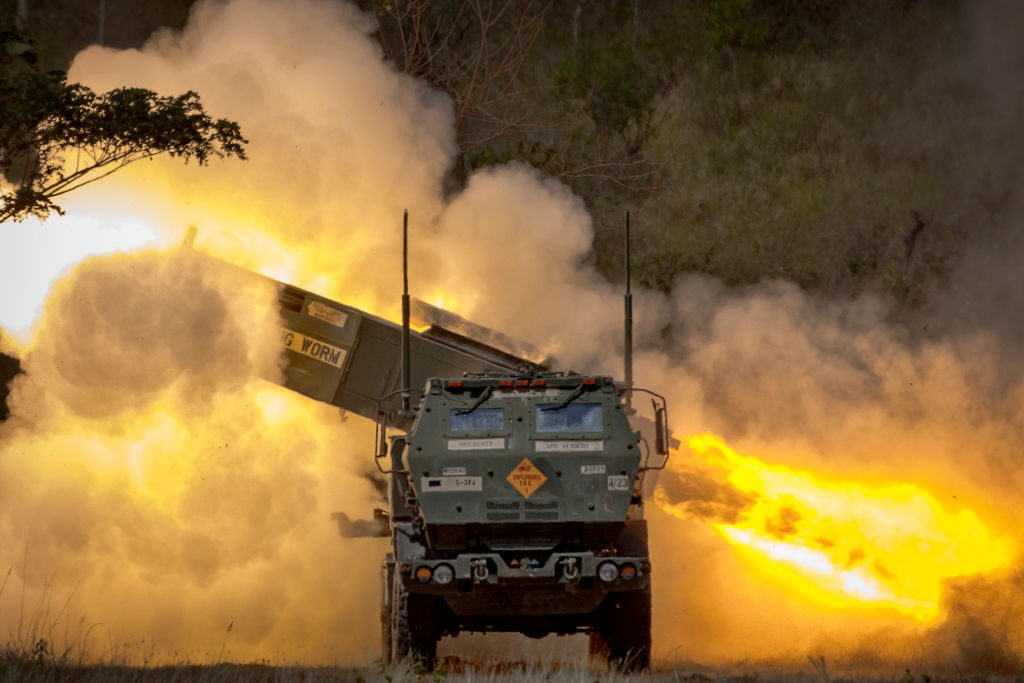Four additional military bases in the Philippines were opened up to U.S. troops on Monday, with one site near the increasingly contested South China Sea and another bordering Taiwan.
AFP reports the treaty allies agreed in February to expand cooperation in “strategic areas” of the Philippines as they seek to counter China’s growing assertiveness over independent Taiwan and the spread of Chinese bases in the South China Sea.
The 2014 Enhanced Defense Cooperation Agreement, known as EDCA, gave U.S. forces access to five Philippine bases.
It was expanded to nine, but the locations of the four additional bases were withheld until Monday while the government consulted with local officials.

U.S. and Philippine troops fire a High Mobility Artillery Rocket System (HIMARS) during live fire exercises as part of U.S.-Philippines army-to-army joint drills on March 31, 2023 in Laur, Nueva Ecija, Philippines. (Ezra Acayan/Getty)
The four sites had been assessed by the Philippine military and deemed “suitable and mutually beneficial”, the Presidential Communications Office said in a statement as seen by AFP.
Three of the sites are in the northern Philippines, including a naval base and airport in Cagayan province and an army camp in the neighbouring province of Isabela, the Philippine statement said.
The naval base at Cagayan’s Santa Ana is about 250 miles from Taiwan.
Communist China on the Move: The U.S. military has documented a “surge of maritime activity” by China in the South China Sea since the Chinese coronavirus global pandemic began. https://t.co/YUAijff4su
— Breitbart News (@BreitbartNews) June 7, 2020
The United States had two major military bases in the Philippines but they were closed in the early 1990s after growing nationalist sentiment.
U.S. troops return to the Philippines every year for joint military exercises, including Balikatan, which kicks off next week.
With more than 17,000 soldiers taking part, it will be the largest yet.
Those forces gather as an increasingly assertive Beijing challenges all and sundry who send any military forces into the area surrounding the South China Sea.
Last year a Chinese fighter jet challenged an Australian reconnaissance plane in the area, flying close by before releasing flares and bundles of chaff that entered at least one of its target’s engines causing a return to base.
A Chinese fighter jet challenged an Australian reconnaissance plane last month over the South China Sea, flying close by before releasing flares and bundles of chaff that entered at least one of its target’s engines causing a return to base. https://t.co/MsL2hB1ECe
— Breitbart News (@BreitbartNews) June 5, 2022
The incident came just days after a Canadian CP-140 Aurora long-range patrol aircraft was allegedly subjected to the same reception by hostile Chinese warplanes.
Beijing lays claim to almost the entire South China Sea in direct defiance of international law.
The Permanent Court of Arbitration at The Hague said on 12 July 2016 there was no evidence China had ever exercised exclusive control historically over the key waterway.
It further warned the Chinese Communist regime in Beijing to cease and desist from efforts claiming regional sovereignty.


